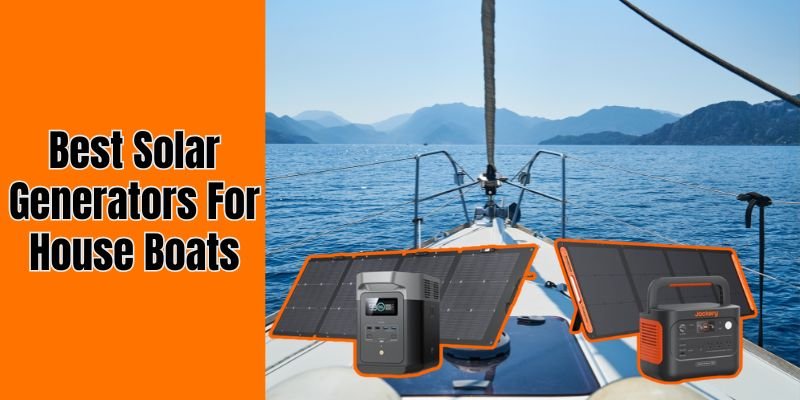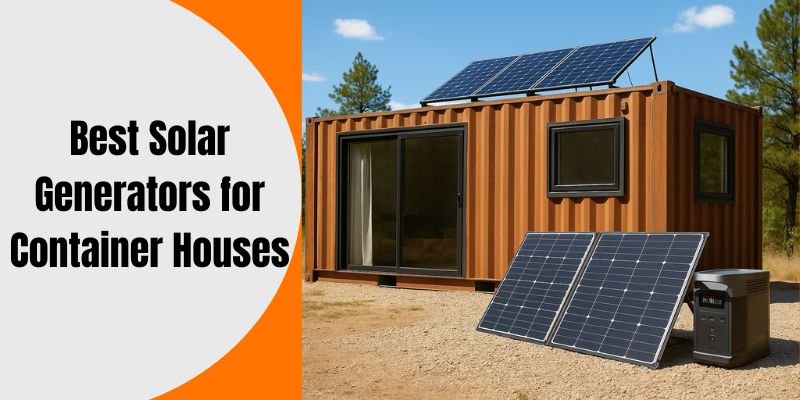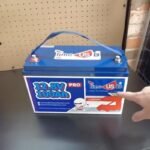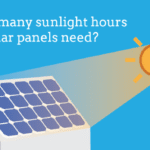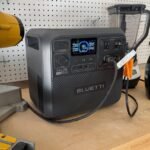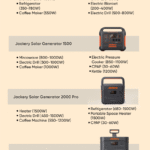Disclosure: This post contains affiliate links and I will be compensated if you make a purchase after clicking through my links. Learn More
To build a 5000-watt solar generator, gather solar panels, batteries, inverters, and charge controllers. Connect the components correctly for efficient power generation.
Solar energy is a sustainable and cost-effective way to generate electricity. Building a 5000-watt solar generator allows you to harness the sun’s power for various needs. This guide will cover essential components like solar panels, batteries, inverters, and charge controllers.
Proper assembly and connection ensure optimal performance. Solar generators are ideal for off-grid living, emergency backup, and reducing electricity bills. Understanding the basics of solar energy and equipment can help you create an efficient and reliable power source. Let’s dive into the steps and considerations for building your solar generator.
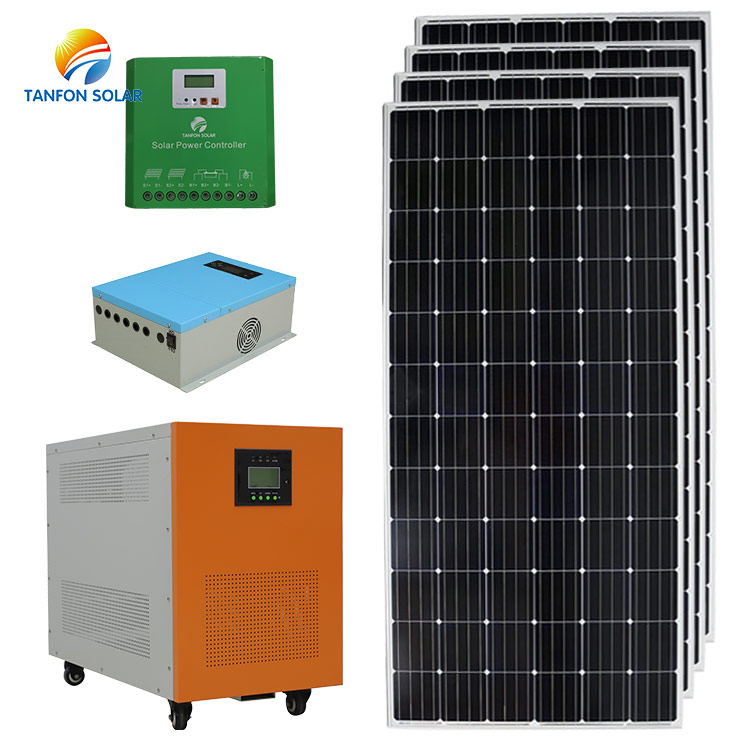
Introduction To Solar Generators
Solar generators capture the sun’s energy and convert it into electricity. They are eco-friendly and provide a sustainable power source. Solar generators are perfect for homes, RVs, and outdoor adventures.
Benefits Of Solar Power
Solar power is renewable and sustainable. It reduces electricity bills and has low maintenance costs. Solar panels are durable and can last for decades. Solar power reduces carbon footprint and helps the environment.
Why Choose A 5000 Watt Generator
A 5000 watt generator can power most household appliances. It is perfect for emergencies and off-grid living. You can charge multiple devices at once. It provides enough power for refrigerators, lights, and even air conditioners.
Necessary Components
Building a 5000 watt solar generator requires several essential components. Each component plays a critical role in the system’s performance. This section will guide you through the necessary components to build your solar generator.
Solar Panels
Solar panels are the heart of your solar generator. They capture sunlight and convert it into electricity. You will need high-efficiency solar panels to meet the 5000 watt requirement.
- Choose panels with a high wattage rating.
- Ensure they have good durability and weather resistance.
- Opt for monocrystalline or polycrystalline panels for better efficiency.
Charge Controller
A charge controller regulates the voltage and current coming from the solar panels. It ensures the batteries are charged safely and efficiently. You will need a charge controller that can handle the power output of your solar panels.
- Look for a controller with a high amp rating.
- MPPT controllers are more efficient than PWM controllers.
- Ensure it has protection features against overcharging and short circuits.
Batteries
Batteries store the energy generated by the solar panels. They allow you to use solar power even when the sun isn’t shining. To build a 5000 watt solar generator, you will need batteries with sufficient capacity.
- Choose deep-cycle batteries for longer lifespan.
- Lithium-ion batteries are more efficient but costlier than lead-acid batteries.
- Ensure the battery bank can handle the total power output.
Inverter
An inverter converts the stored DC power in the batteries to AC power. This is necessary for running household appliances. To meet the 5000 watt requirement, you will need a robust inverter.
- Select an inverter with a continuous power rating of 5000 watts.
- Look for a pure sine wave inverter for better compatibility with electronics.
- Ensure it has adequate cooling features to prevent overheating.
Calculating Power Needs
Building a 5000-watt solar generator requires careful planning. First, calculate your power needs. This ensures your system can handle daily usage.
Estimating Daily Usage
To estimate daily usage, list all devices you plan to power. Include their wattage and usage hours per day. This helps calculate total energy consumption.
- Device 1: LED TV
- Wattage: 100W
- Usage: 4 hours/day
- Device 2: Laptop
- Wattage: 60W
- Usage: 5 hours/day
- Device 3: Refrigerator
- Wattage: 150W
- Usage: 24 hours/day
Sum the total watt-hours per day:
100W 4 hours = 400 Wh
60W 5 hours = 300 Wh
150W 24 hours = 3600 Wh
Total = 4300 Wh/day
Sizing Your System
Now, size your solar system to meet your energy needs. Consider panel efficiency, battery capacity, and inverter size.
| Component | Specification |
|---|---|
| Solar Panels | 5000W total capacity |
| Batteries | Storage for 4300 Wh/day |
| Inverter | 5000W output |
Choose high-efficiency panels. This maximizes energy capture.
Select batteries with enough storage. They should handle your daily energy usage.
Ensure the inverter can handle peak loads. This prevents system overload.
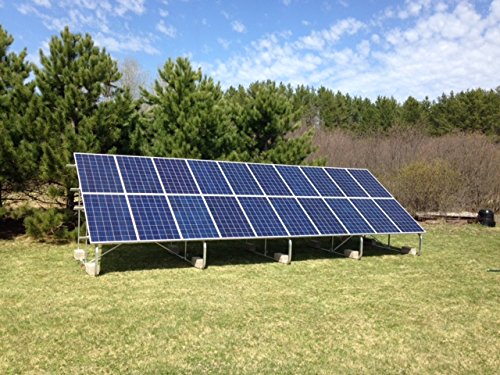
Selecting Solar Panels
Choosing the right solar panels is a crucial step in building a 5000-watt solar generator. This section will help you understand the different types of panels and their efficiencies.
Types Of Panels
There are mainly three types of solar panels: monocrystalline, polycrystalline, and thin-film. Each type has its own benefits and drawbacks.
- Monocrystalline Panels: Made from a single crystal structure. They are the most efficient but also the most expensive.
- Polycrystalline Panels: Made from multiple crystal structures. They are less efficient than monocrystalline but more affordable.
- Thin-Film Panels: Made from a thin layer of photovoltaic material. They are the least efficient but the cheapest and most flexible.
Panel Efficiency
Panel efficiency determines how much sunlight is converted into electricity. Higher efficiency means more power output.
Monocrystalline panels usually have an efficiency between 15-20%. Polycrystalline panels range from 13-16%. Thin-film panels have an efficiency of around 10-12%.
Here is a simple table to compare their efficiencies:
| Type | Efficiency |
|---|---|
| Monocrystalline | 15-20% |
| Polycrystalline | 13-16% |
| Thin-Film | 10-12% |
For a 5000-watt solar generator, using high-efficiency panels is recommended. This reduces the number of panels needed and saves space.
Always check the efficiency rating before buying a panel. A higher rating means better performance.
Choosing The Right Batteries
Choosing the right batteries is vital for your 5000-watt solar generator. The batteries store energy for later use. They ensure your generator runs smoothly. This section will guide you through the options.
Battery Types
There are several types of batteries available. Each type has its pros and cons. Here are the most common:
- Lead-Acid Batteries: These are affordable and reliable. They have been used for years.
- Lithium-Ion Batteries: These are lighter and last longer. They also charge faster.
- Saltwater Batteries: These are eco-friendly and safe. They don’t contain heavy metals.
Capacity And Lifespan
The battery capacity determines how much energy it can store. It is measured in amp-hours (Ah) or kilowatt-hours (kWh).
- Lead-Acid Batteries: Typically, they have a shorter lifespan. They need regular maintenance.
- Lithium-Ion Batteries: These have a longer lifespan. They require less maintenance.
- Saltwater Batteries: These have a moderate lifespan. They are easy to maintain.
| Battery Type | Capacity | Lifespan |
|---|---|---|
| Lead-Acid | 100-200 Ah | 3-5 years |
| Lithium-Ion | 100-300 Ah | 10-15 years |
| Saltwater | 100-200 Ah | 5-10 years |
Choosing the right battery is essential. Consider your needs, budget, and maintenance capacity. This ensures your solar generator performs well and lasts long.
Installing The Charge Controller
Setting up the charge controller is crucial for your solar generator. The controller manages the energy flow from solar panels to the battery. This helps to prevent overcharging and prolongs battery life. Follow these guidelines to ensure a smooth installation.
Controller Types
There are two main types of charge controllers: PWM and MPPT.
- PWM (Pulse Width Modulation): PWM controllers are cost-effective. They are suitable for smaller setups.
- MPPT (Maximum Power Point Tracking): MPPT controllers are more efficient. They are ideal for larger systems.
Installation Tips
Here are some tips to help you install your charge controller correctly:
- Choose the Right Location: Place the controller near the battery. This minimizes energy loss.
- Connect the Battery First: Always connect the battery before the solar panels. This helps to avoid damage.
- Use Proper Wiring: Ensure you use the correct gauge wires. This prevents overheating.
- Secure All Connections: Tighten all connections to avoid loose wires. Loose wires can cause sparks.
- Check for LED Indicators: Most controllers have LED lights. These lights show the status of the system. Make sure they are working properly.
| Component | Purpose |
|---|---|
| Charge Controller | Manages the energy flow |
| Battery | Stores the energy |
| Solar Panels | Generate solar energy |
| Wires | Connects all components |
Setting Up The Inverter
Setting up the inverter is a crucial step in building your 5000 Watt solar generator. The inverter converts the direct current (DC) from your solar panels into alternating current (AC). This allows you to power household appliances. Understanding the different types of inverters and how to connect them is essential for a successful setup.
Inverter Types
There are several types of inverters to choose from. Each has unique features and benefits. Here are the most common types:
- Pure Sine Wave Inverters: These provide clean and stable power. Ideal for sensitive electronics.
- Modified Sine Wave Inverters: Less expensive but may cause issues with some devices.
- Grid-Tie Inverters: These connect your solar generator to the grid. Perfect for reducing electricity bills.
- Off-Grid Inverters: Best for standalone systems. Great for remote locations.
Connecting The Inverter
Connecting the inverter involves several steps. Follow these instructions carefully:
- Locate the DC Input: Find the DC input terminals on your inverter.
- Connect to Battery: Use appropriate cables. Connect the inverter to the battery bank.
- Observe Polarity: Ensure correct polarity. Connect positive to positive and negative to negative.
- Secure Connections: Tighten all connections. Loose connections can cause problems.
- Connect AC Output: Locate the AC output terminals. Connect to your home’s electrical system or appliances.
Ensure all connections are secure and double-check for any loose wires. This will help prevent issues and ensure efficient performance.
Here is a quick reference table for inverter types and their uses:
| Inverter Type | Use Case |
|---|---|
| Pure Sine Wave | Sensitive Electronics |
| Modified Sine Wave | Basic Appliances |
| Grid-Tie | Connecting to Grid |
| Off-Grid | Remote Locations |
By understanding and setting up the inverter correctly, you ensure your solar generator works efficiently. This step is vital for powering your home smoothly.

Wiring And Safety
Building a 5000-watt solar generator requires careful attention to wiring and safety. Ensuring proper connections and following safety guidelines is essential. This section will guide you through the necessary steps.
Wiring Diagrams
Wiring your solar generator correctly is crucial. A wiring diagram helps visualize the setup.
- Solar Panels to Charge Controller: Connect solar panels to the charge controller. Use appropriate gauge wire.
- Charge Controller to Battery: Connect the charge controller to the battery bank. Ensure secure and tight connections.
- Battery to Inverter: Connect the battery bank to the inverter. Use heavy-duty cables for high current.
- Inverter to Load: Finally, connect the inverter to your load. Make sure the load matches the inverter capacity.
| Component | Connection |
|---|---|
| Solar Panels | Charge Controller |
| Charge Controller | Battery Bank |
| Battery Bank | Inverter |
| Inverter | Load |
Safety Precautions
Safety is paramount when building a solar generator. Follow these precautions:
- Wear Protective Gear: Always wear gloves and safety goggles.
- Disconnect Power: Ensure all power sources are disconnected before wiring.
- Use Proper Tools: Only use tools designed for electrical work.
- Check Connections: Double-check all connections for tightness and correct polarity.
- Avoid Water: Keep all components dry and away from water.
- Use Fuses: Install fuses between components to prevent short circuits.
- Inspect Regularly: Regularly inspect your setup for wear and tear.
Following these steps ensures your solar generator is safe and efficient. Proper wiring and safety precautions are essential for a successful build.
Testing And Maintenance
Once you’ve built your 5000 watt solar generator, it’s crucial to ensure it’s working properly and remains in good condition. This involves initial testing and ongoing maintenance. These steps will help you get the best performance from your solar generator.
Initial Testing
After assembling your solar generator, it’s time for the initial test. Follow these steps:
- Check Connections: Ensure all cables and wires are correctly connected.
- Inspect Panels: Make sure the solar panels are clean and free of debris.
- Power On: Switch on the generator and monitor the power output.
- Test Battery: Verify the battery charges correctly and holds a charge.
- Check Inverter: Ensure the inverter is converting DC to AC power efficiently.
Use a multimeter to measure voltage and current. This will help you confirm everything is working as expected.
Routine Maintenance
Maintaining your solar generator is key to its longevity. Follow these maintenance tips:
- Clean Panels: Wipe solar panels regularly to remove dust and dirt.
- Check Connections: Inspect wires and connections for any signs of wear or damage.
- Monitor Battery: Keep an eye on the battery’s performance and replace if necessary.
- Test Output: Regularly test the power output to ensure efficiency.
- Inspect Inverter: Check the inverter for any issues or malfunctions.
Scheduling regular checks can prevent potential problems. Create a maintenance schedule to stay on track.
| Maintenance Task | Frequency |
|---|---|
| Clean Solar Panels | Monthly |
| Check Connections | Every 3 Months |
| Monitor Battery | Every 6 Months |
| Test Output | Monthly |
| Inspect Inverter | Annually |
By following these steps, your 5000 watt solar generator will stay in top condition. Regular testing and maintenance ensure reliable and efficient power generation.
Cost Considerations
Building a 5000 Watt solar generator involves various cost considerations. Understanding these costs helps you budget effectively and achieve long-term savings.
Budgeting For Components
Creating a budget is crucial. List out all necessary components and their costs.
- Solar Panels: These are the most expensive parts. Prices range from $150 to $300 per panel.
- Inverter: Converts DC to AC power. Cost ranges between $200 to $500.
- Battery Storage: Stores generated power. Prices vary from $100 to $400 per battery.
- Charge Controller: Manages the power flow. Typically costs $20 to $100.
- Miscellaneous: Includes wiring, mounts, and other hardware. Budget around $100 to $200 for these.
Here’s a simple cost estimate table to help you plan:
| Component | Estimated Cost |
|---|---|
| Solar Panels | $750 – $1500 |
| Inverter | $200 – $500 |
| Battery Storage | $400 – $1600 |
| Charge Controller | $20 – $100 |
| Miscellaneous | $100 – $200 |
Long-term Savings
Investing in a solar generator saves you money in the long run. You reduce or eliminate electricity bills.
Solar energy is renewable. You don’t worry about rising energy prices.
Calculate your potential savings over a year. This helps justify the initial cost.
- Calculate your current monthly electricity bill.
- Estimate annual savings by multiplying monthly bill by 12.
- Compare the annual savings to the initial investment.
Example: If your monthly bill is $100, annual savings are $1200. If your total setup cost is $3000, you break even in 2.5 years.
This calculation shows how quickly you recoup the initial investment. It also highlights the long-term financial benefits.
Frequently Asked Questions
What Components Are Needed For A Solar Generator?
You need solar panels, charge controller, inverter, battery bank, and wiring.
How Do Solar Panels Generate Electricity?
Solar panels convert sunlight into electricity using photovoltaic cells.
Can I Use A 5000 Watt Generator For Home Use?
Yes, it can power essential home appliances and devices.
How Long Does It Take To Build?
It depends on your experience but typically a few days.
Final Words
Building a 5000 watt solar generator is a rewarding project. You gain energy independence and reduce electricity costs. Follow the steps carefully to ensure efficiency. A solar generator is an eco-friendly choice for sustainable energy. Enjoy the benefits of clean, renewable power for years to come.

